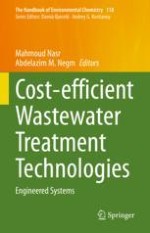2023 | OriginalPaper | Buchkapitel
Microbial Biosurfactants and Their Implication Toward Wastewater Management
verfasst von : Geeta Rawat, Renu Choudhary, Vivek Kumar
Erschienen in: Cost-efficient Wastewater Treatment Technologies
Aktivieren Sie unsere intelligente Suche, um passende Fachinhalte oder Patente zu finden.
Wählen Sie Textabschnitte aus um mit Künstlicher Intelligenz passenden Patente zu finden. powered by
Markieren Sie Textabschnitte, um KI-gestützt weitere passende Inhalte zu finden. powered by
